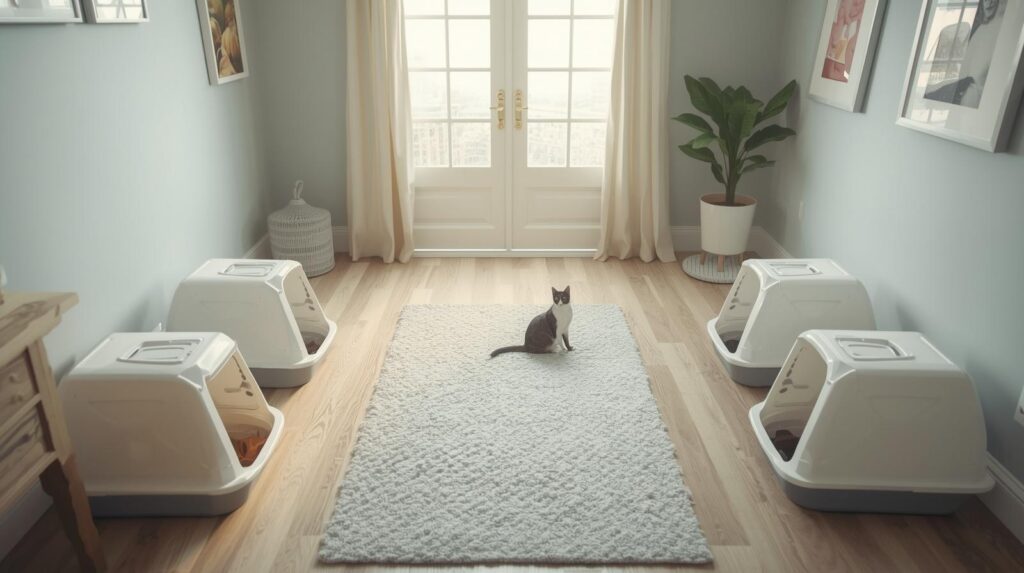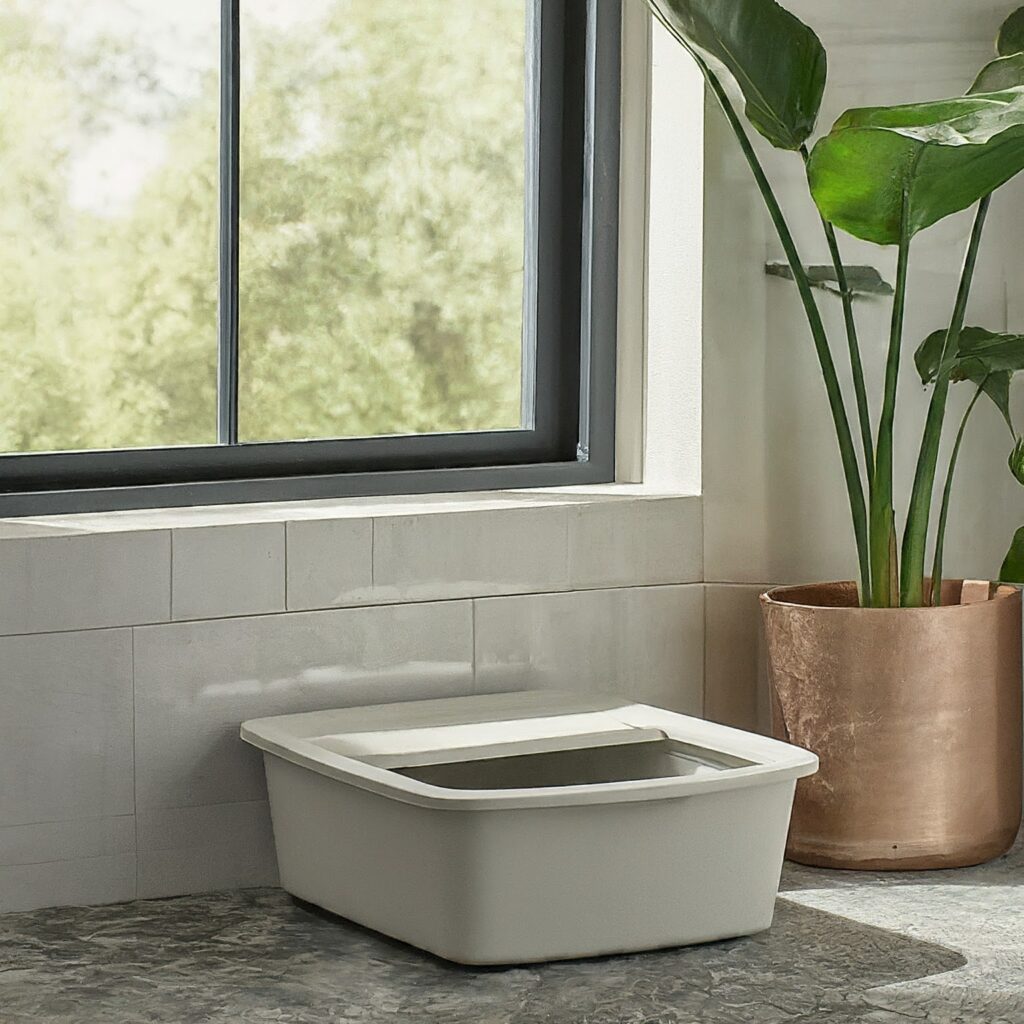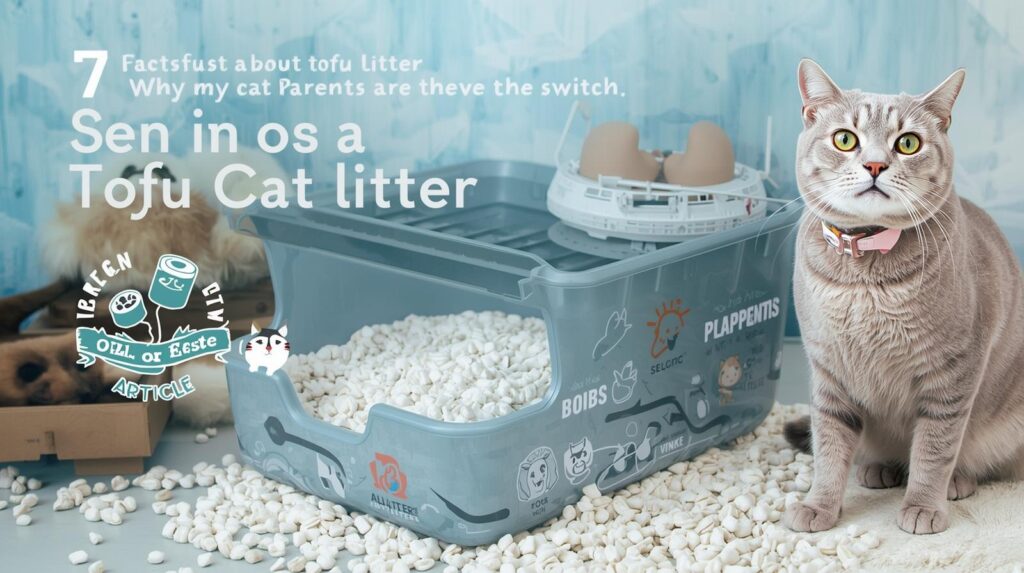
How Many Litter Boxes Per Cat — The Real Reason Your Cat Is Peeing Outside the Box If you’ve ever walked into your living room only to find your cat’s “surprise” waiting outside the box, you’re not alone.
Cat parents all over the world ask the same question every day:
“Why isn’t my cat using the litter box anymore?”
The truth is, most litter-box problems aren’t about bad behaviour — they’re about stress, space, and setup mistakes that humans unknowingly make.
And it all starts with one simple but misunderstood rule:
One litter box per cat — plus one extra.
Vet-approved guide, we’ll explore the emotional and scientific side of litter-box success — why this rule matters, how to make it work even in small apartments, and how to prevent your cats from turning your home into their personal battlefield.
Because your cats deserve comfort, and you deserve peace of mind.
I write with love and care, keeping your furry friend’s health first and following the doctor’s guidance. If it helps, share it—because health and knowledge grow stronger when we share them within our community. My words are carved in stone — I truly worship my cat. Everything I share with you here comes straight from my cat’s own wisdom. That’s why I encourage you to share this blog as much as possible! Also, let me tell you — this is a top-quality blog, so make sure to read it completely to get the most benefit and keep your cats happy and healthy. A cat is the light that brightens every home.
Table of Contents
Why This Vet-Approved Formula Still Outperforms All Others
You’ve probably heard it before:
“One litter box per cat, plus one extra.”
This isn’t a myth — it’s the foundation of feline harmony.
Every certified feline behaviourist and vet still follows this formula because it’s rooted in how cats think and live.
Cats are territorial creatures. Even the best friends among them still crave personal space — especially when it comes to their bathroom habits. In multi-cat homes, having too few boxes can cause urine marking, stress spraying, and even bladder inflammation due to anxiety.
When you follow this formula, you’re not just adding boxes — you’re giving your cats a sense of safety, ownership, and privacy.
Example:
If you have 2 cats, you need 3 litter boxes.
If you have 3 cats, you need 4 boxes.
It’s that simple — but life-changing for your cats.
Why this works (the science behind it)
- Cats don’t share resources naturally. In the wild, they use separate spots to avoid predators and disease.
- Multiple boxes prevent bullying. Dominant cats can block weaker cats from access.
Extra boxes reduce smell and stress. Each box gets less use, meaning it stays cleaner longer.
Understanding Your Cat’s Emotional Needs

Let’s be honest — your cat doesn’t care how stylish your litter box is.
What matters is how it feels when they step in.
When there are too few litter boxes, your cats start to feel trapped. Imagine if you had to share one bathroom with five people — and one of them keeps guarding the door!
That’s exactly what your cat experiences in a crowded litter setup.
Common signs your cat is stressed by the litter box setup:
- Peeing or pooping outside the box
- Digging frantically or crying before using the box
- Scratching around but not entering
- Hiding after elimination
- Spraying vertical surfaces (walls, furniture)
Each of these is a cry for help.
Behaviourists explain that most “bad behaviour” is actually cat communication — your feline is telling you the environment isn’t right.
To solve this, start by observing how your cats behave around the box:
- Do they hesitate before entering?
- Do they wait for another cat to leave?
- Do they prefer one box and avoid others?
These are hints that your litter box placement or number isn’t meeting their emotional comfort zone.
Placement — The Secret Ingredient Most Owners Miss

Even if you have the perfect number of boxes, placing them wrong can destroy your effort.
Vet-approved placement rules:
- One box per floor in multi-level homes — so no cat feels trapped.
- Separate zones, not one cluster. Spread boxes across rooms to give cats real options.
- Avoid loud or high-traffic areas. Laundry machines, kitchens, or near litter robots can scare off sensitive cats.
- Never place near food or water bowls. Cats are clean creatures — this breaks their natural hygiene instinct.
- Provide privacy with visibility. A semi-enclosed space (like behind furniture) gives comfort but still lets cats see their surroundings.
Real-world examples
- In a small apartment, one open box in the living area and another discreet one in the bathroom corner work wonders.
- In a multi-cat home, each cat should have a box in its favourite resting zone.
- In a multi-floor home, cats with arthritis or old age should have easy-access boxes on every level.
Vet Tip: Use a mix of open and high-wall boxes. Open boxes help anxious cats feel safe; high-wall boxes reduce scatter and odor.
Cleaning & Maintenance – The Real Reason Cats Stop Using the Box
You can have the perfect formula and placement, but if your boxes aren’t clean, none of it matters. Cats have sensitive noses — far more than humans. What smells “fine” to you might smell like a public toilet to them.
Vet-recommended cleaning routine
- Scoop at least twice daily.
- Replace litter weekly.
- Deep wash every 2 weeks using unscented soap and warm water.
- Avoid strong chemicals or citrus cleaners (they repel cats).
When cleaning isn’t consistent, cats begin to associate the box with discomfort. They may start using soft surfaces like rugs, laundry, or even beds — because they’re clean and quiet.
Signs your box needs immediate cleaning
- Strong ammonia odor
- Wet litter clumps to the bottom
- The cat is scratching excessively before using
- Multiple cats refusing the same box
Remember: a clean box = a happy cat.
When to Add More Boxes or Change the Setup

Even with proper numbers, you may need to adjust your setup over time.
Add more boxes when:
- You notice cats waiting for a turn.
- One cat starts blocking others.
- You have a new kitten or senior cat.
- You move into a multi-story or open-concept home.
Change your litter type if:
- Your cat sneezes near the box (sign of dust allergy).
- They scratch but avoid digging.
- They start urinating elsewhere after switching litter brands.
Modern vets recommend low-dust, unscented, clumping litter as the safest for respiratory health — especially for indoor cats.
Vet-approved recommended products
- Dr Elsey’s Ultra Clumping Cat Litter (low dust, high odor control)
- Boxiecat Pro Natural Litter (vet-formulated for sensitive cats)
- Frisco High-Sided Litter Box (reduces scatter for multi-cat homes)
Further readings
Why Is My Cat Peeing Outside the Litter Box?
FAQs- How Many Litter Boxes Per Cat
How many litter boxes for 9 cats?
For 9 cats, follow the “one box per cat + one extra” rule: you’ll need 10 litter boxes.
Yes, it sounds like a lot, but with that many cats, territorial behavior becomes intense. Each cat must feel ownership of at least one box.
If you have a large space, spread boxes in different rooms and levels to prevent dominance or guarding. For smaller homes, use multi-level cat furniture with built-in litter compartments.
What is the 3-3-3 rule for cats?
The 3-3-3 rule describes a cat’s emotional adjustment period:
3 days to decompress
3 weeks to start feeling comfortable
3 months to feel fully at home
During this time, providing multiple litter boxes helps them establish safety. Cats under stress often eliminate outside the box, so giving more choices helps them adjust faster.
Do I need a litter box on every floor?
Yes — absolutely.
If your home has multiple levels, place at least one litter box per floor. Cats with arthritis, senior cats, or kittens can’t always reach a distant box in time.
It’s also crucial for multi-cat households where access may be blocked by dominant cats. Each floor should have quiet, safe spots for easy access.
What is the golden rule for litter boxes?
The golden rule for litter boxes is:
“One litter box per cat, plus one extra.”
This ensures hygiene, prevents territorial disputes, and keeps stress levels low. It’s been the veterinary gold standard for over a decade, and research confirms it’s still the best formula.
What annoys cats the most?
Cats get annoyed by:
Dirty litter boxes (top reason for avoidance)
Loud noises near their boxes
Strong fragrances or chemical cleaners
Sudden changes in litter brand or box type
Lack of privacy
If you fix these triggers, most cats stop misbehaving immediately. Think of it as giving them control and comfort — the two things cats crave most.
Is breathing cat litter dust harmful?
Yes, prolonged exposure to litter dust can be harmful — not just for cats but also for humans.
Fine silica particles can cause respiratory irritation, sneezing, and even chronic bronchitis in sensitive cats. In people, it can worsen asthma or allergies.
To prevent this, always choose low-dust litter and ventilate the litter area. Avoid clay-based brands that create visible dust clouds.
Wrap-Up: Your Cats Deserve a Calm, Clean, and Comforting Space
At the heart of every happy cat home lies one simple truth — comfort equals trust.
When you understand How Many Litter Boxes Per Cat you truly need, you’re not just solving a bathroom issue; you’re solving a behavioural and emotional puzzle your cats face every day.
Your cat doesn’t reject the litter box to annoy you — they’re communicating stress, discomfort, or confusion.
And by following the vet-approved “one box per cat plus one extra” rule, you’re showing your cat that their needs matter.
Here’s what you can take away today:
- Respect their instincts: Cats are territorial and private creatures; each one needs a safe space to go.
- Think like a feline: Keep litter boxes accessible, quiet, and odor-free — especially in multi-floor homes.
- Clean consistently: Scooping twice daily isn’t a chore — it’s an act of care that builds trust.
- Balance space and setup: If your home feels small, use creative placements or covered boxes that reduce odor but keep comfort.
- Stay proactive: Any sudden litter box changes often signal stress or health problems — never ignore them.
Cats thrive on routine, respect, and reassurance. When their environment feels safe, their behaviour follows naturally.
So next time you clean your litter box, remember — you’re not just keeping your home fresh. You’re nurturing your cat’s emotional well-being and strengthening the bond between you both.
I write with love and care, keeping your furry friend’s health first and following the doctor’s guidance. If it helps, share it—because health and knowledge grow stronger when we share them within our community. My words are carved in stone — I truly worship my cat. Everything I share with you here comes straight from my cat’s own wisdom. That’s why I encourage you to share this blog as much as possible! Also, let me tell you — this is a top-quality blog, so make sure to read it completely to get the most benefit and keep your cats happy and healthy. A cat is the light that brightens every home.


